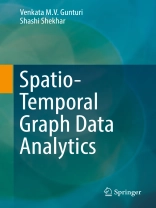This book highlights some of the unique aspects of spatio-temporal graph data from the perspectives of modeling and developing scalable algorithms. The authors discuss in the first part of this book, the semantic aspects of spatio-temporal graph data in two application domains, viz., urban transportation and social networks. Then the authors present representational models and data structures, which can effectively capture these semantics, while ensuring support for computationally scalable algorithms.
In the first part of the book, the authors describe algorithmic development issues in spatio-temporal graph data. These algorithms internally use the semantically rich data structures developed in the earlier part of this book. Finally, the authors introduce some upcoming spatio-temporal graph datasets, such as engine measurement data, and discuss some open research problems in the area.
This book will be useful as a secondary text for advanced-level students entering into relevant fields of computer science, such as transportation and urban planning. It may also be useful for researchers and practitioners in the field of navigational algorithms.
Inhaltsverzeichnis
1 Introduction.- 2 Fundamental Concepts for Spatio-Temporal Graphs.- 3 Representational Models for Spatio-Temporal Graphs.- 4 Fastest Path for a Single Departure-Time.- 5 Advanced Concepts: Critical Time Point Based Approaches.- 6 Advanced Concepts: Bi-directional Search for Temporal Digraphs.- 7 Knowledge Discovery: Temporal Disaggregation in Social Interaction Data.- 8 Trend Topics: Engine Data Analytics.












